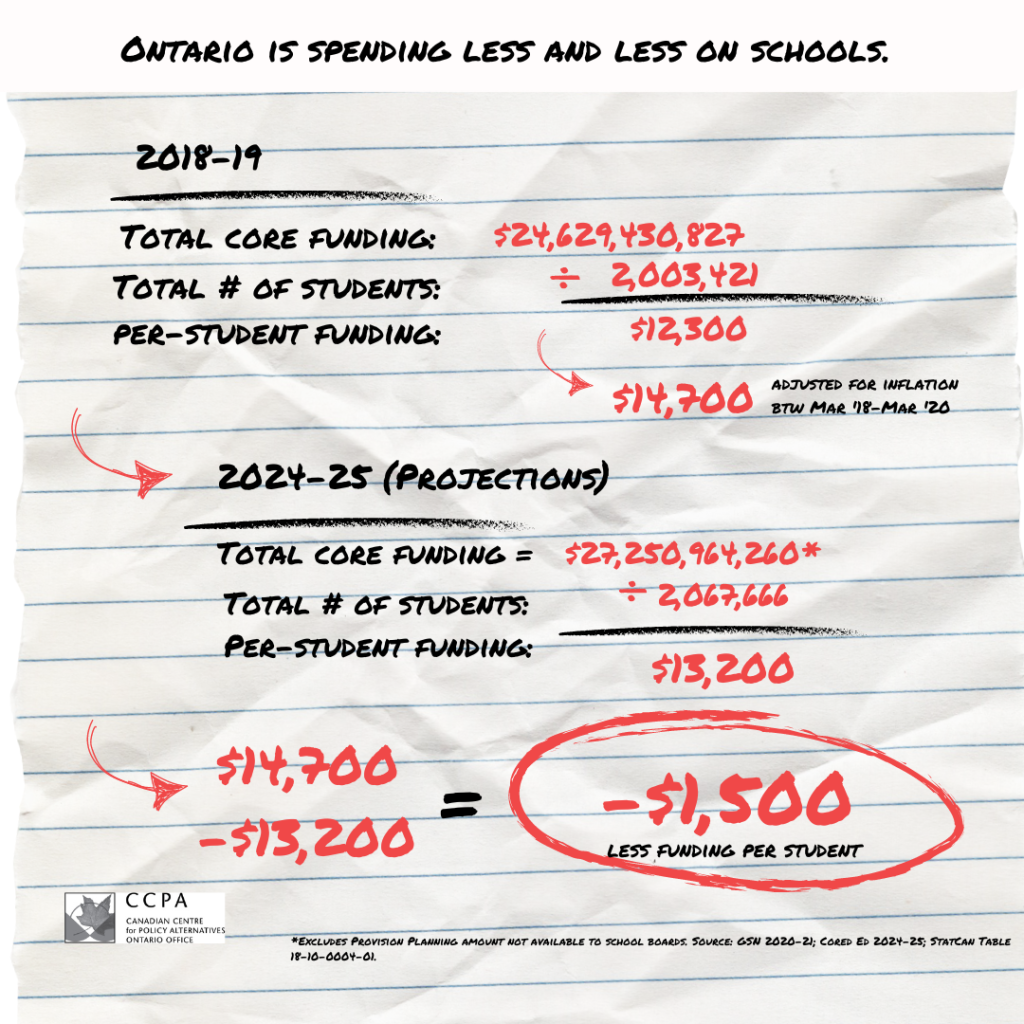Government spending on public services is on the decline in Ontario. And so is transparency. I’m not referring to the murky Greenbelt land deals that turned housing policy into a police matter. I’m talking about the now-common practice of stashing money away in “contingency funds,” which allows the government to manipulate spending, revenues, and deficit figures, turning some financial statements into accounting fiction.
This is happening to education funding, too.
The 2019-20 Grants for Student Needs (GSN) included, for the first time, “Unallocated amounts” to the tune of $82 million, a relatively small amount. The same line item appeared in the three subsequent years, always with amounts below $50 million. Then, suddenly, the line was no longer there in the 2023-2024 GSN projections.
Instead, the document included a “Planning Provision”—money that is not allocated to a specific purpose and not truly available to school boards, as it can only be spent at the discretion of the Ministry of Education. Last year, in 2023-2024, that amount was $317 million. Over the course of the year, the amount increased to $1.281 billion. In the projections for 2024-25, the school year ahead, it goes up further to $1.390 billion.
This dramatic shift in budgeting matters. Here’s why:
First, the Planning Provision makes up 4.85 per cent of the 2024-2025 GSN allocation, now called Core Education Funding (Core Ed). Boards can’t spend this money at their discretion, so they can’t count on receiving it as they plan (and hire) for the next school year.
Second, the Planning Provision amount helps the government disguise the systematic underfunding of public schools that has been taking place since 2018.
Last year, I estimated that since the Ford government came to power, inflation-adjusted school funding had dropped by $1,200 per student (en francais ici). I excluded the Planning Provision from last year’s calculation, and I did the same this year, because core funding is not really core funding if it isn’t available to schools.
The inflation-adjusted funding shortfall between the 2018-19 and 2024-25 school years is now $1,500 per student.

If the Ministry of Education were to make the entire amount in the Planning Provision available to boards by the end of the school year, the funding shortfall per student would narrow to $900, but only for the current year. This would most likely be one-time spending; there is no reason to think it would be built into base funding for future years. The funding gap would widen again the following year.
The bottom line is that for the 2018-19 school year, school boards counted on an average of $14,700 per student in inflation-adjusted terms; for the next school year, they will have to make do with $13,200. And children will pay the price.







